Tag: Industrial Rigging
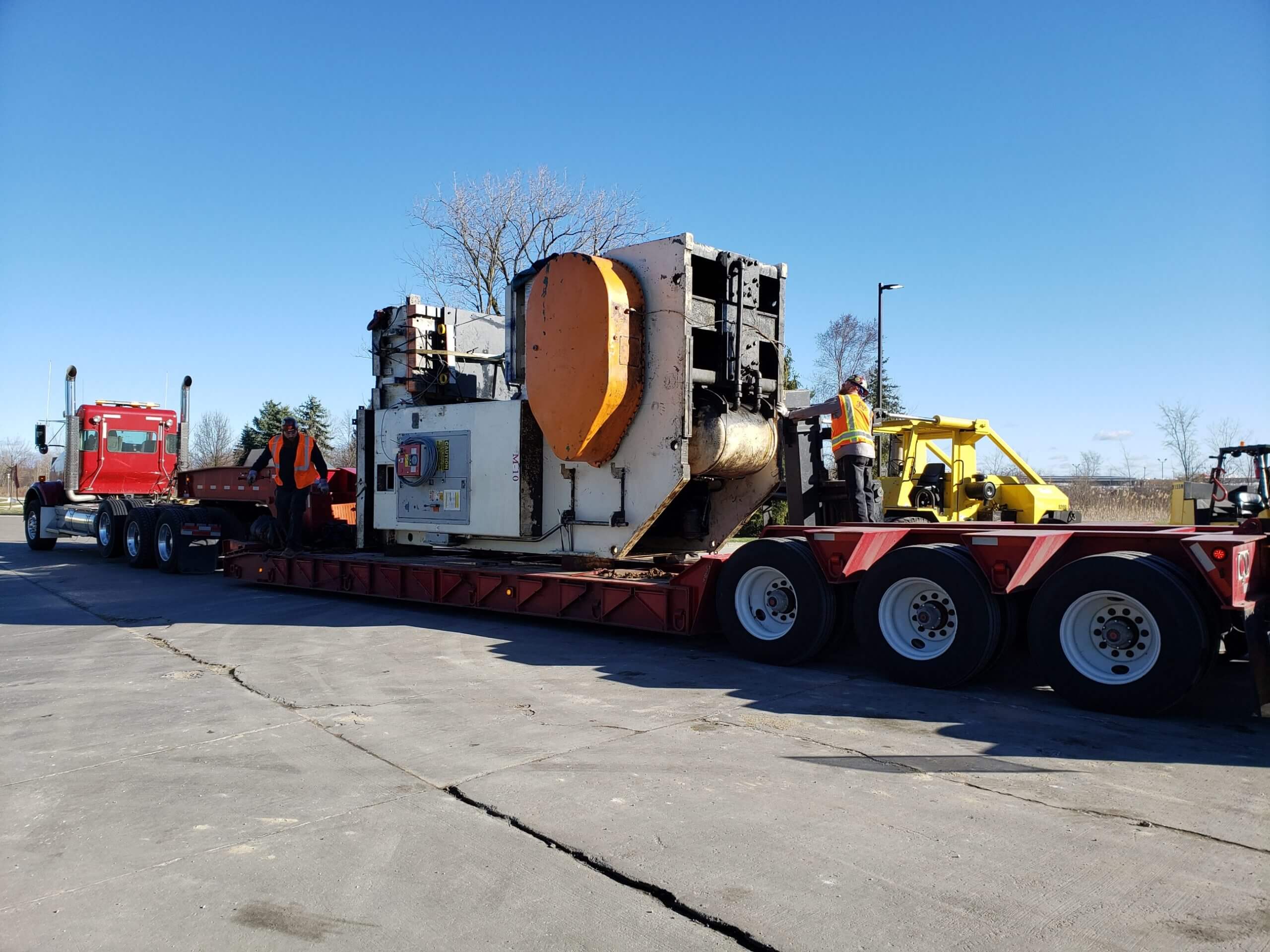
Relocation and expanding is a natural aspect of growing a successful business. However, when it comes to heavy equipment relocation, the challenges can become difficult. When tasked with moving massive pieces of machinery, many of which entail complicated connections and assembly, the process becomes complex. Selecting a qualified and experienced mover is vital to guarantee a safe and efficient heavy equipment relocation. At Lee Contracting, we are leaders in providing turn-key solutions for rigging and machinery moving.
Benefits of Hiring a Turn-Key Contractor
Hiring a turn-key contractor is guaranteed to save you time and money. Our dedicated teams work across our 13 in-house capabilities to accelerate your schedule. A major benefit of choosing us as your rigging contractor is our ability to utilize our foundations, electrical and mechanical departments. Combining these capabilities provides you a single-source contractor for all your industrial needs.
Our foundations department can complete nearly any type of concrete work to install the perfect base for your machinery. Our electrical department can complete all your utility hookups providing cohesiveness in your schedule. Our mechanical team can complete all your pipefitting, HVAC and air compressor needs required to update your facility.
Our 24/7, 365 availability paired with our world-class customer service makes Lee Contracting your contractor of choice. We have extensive experience in rigging and moving a variety of machinery including:
- Stamping Presses
- IMM and BMM
- Weld Cells
- Robotic Cells
- Assembly Lines
- Machining Equipment
- Layout and aligning
- Equipment rebuilds
- HVAC Systems
Safety Focused
Having a skilled safety team is key. Our safety team works in conjunction with field personnel. Our safety representatives are always kept up to date with trainings and continue to learn about how to keep staff safe. We take the proper steps to reduce employee injury, which keeps our customer’s costs low.
Our rigging department is made of up the best riggers in the industry. With over 30 years of experience, we like to be tested beyond our limits. We work to ensure that every project is safe and efficient. We are available 24/7, 365 days a year and complete every project with state-of-the-art equipment.
Call us today (888) 833-8776 or receive a free quote online for your next rigging project.
Subscribe and receive updates via email
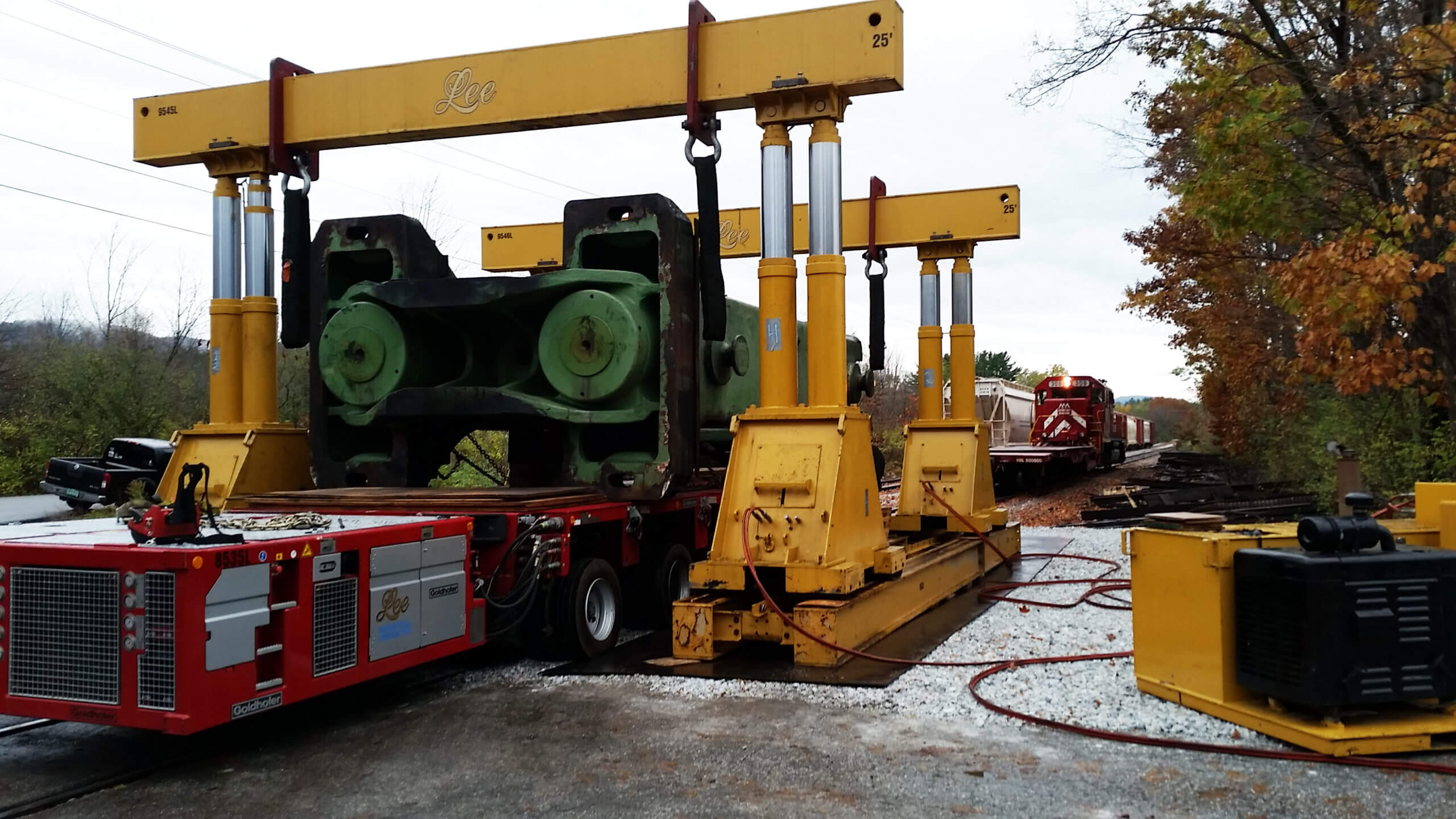
Last week we discussed different types of cranes and focused on hydraulic cranes. At Lee, we specialize in using our portable gantry cranes to move machinery and equipment. So how does a gantry crane system differ from a mobile crane?
A gantry crane is a type of overhead crane supported by freestanding legs that move on wheels or along a track or rail system. Gantry cranes are usually considered when there is a reason not to incorporate an overhead runway system. Unlike a bridge crane, a gantry crane does not need to be tied into a building’s support structure—eliminating the need for permanent runway beams and support columns. In some cases, this can result in a significant reduction in material costs and can be a more cost-effective solution compared to a similarly specified bridge crane. Larger gantry systems may run on a rail or track embedded in the ground, typically in a straight line in a dedicated work area. Smaller portable gantry systems run on castors or wheels and can be moved about a facility for maintenance or light fabrication work.
Rigging Terms
- Portable Gantry Crane System – Portable gantry cranes are smaller lighter-duty gantry systems that run on casters or rubber wheels. These wheels allow the user to move it throughout a facility to handle various materials or loads. When they’re empty and not under load, they can be moved or stored anywhere throughout a shop or into different work cells to offer greater space-saving and floor space flexibility.
- Semi-Gantry Crane System – Gantry cranes can also be designed with one leg riding on wheels or rails and the other side of the crane riding on a runway system connected to building columns or a sidewall of the building structure. These are advantageous because they can save you floor space / workspace. Unlike a bridge crane, this setup doesn’t need two runways supported by or tied back to building columns.
- Shackle – A type of device normally used for lifting.
- Sling – Wire ropes, chains, or synthetic fabric made into forms, with or without fittings, for handling loads.
- Tag Line – A length of rope used to guide a load that is being lifted into the desired position.
- Rigging Hook – A hook used as part of tackle. Any hook used in hoisting and rigging that is not the “primary hook” or main “load hook.”
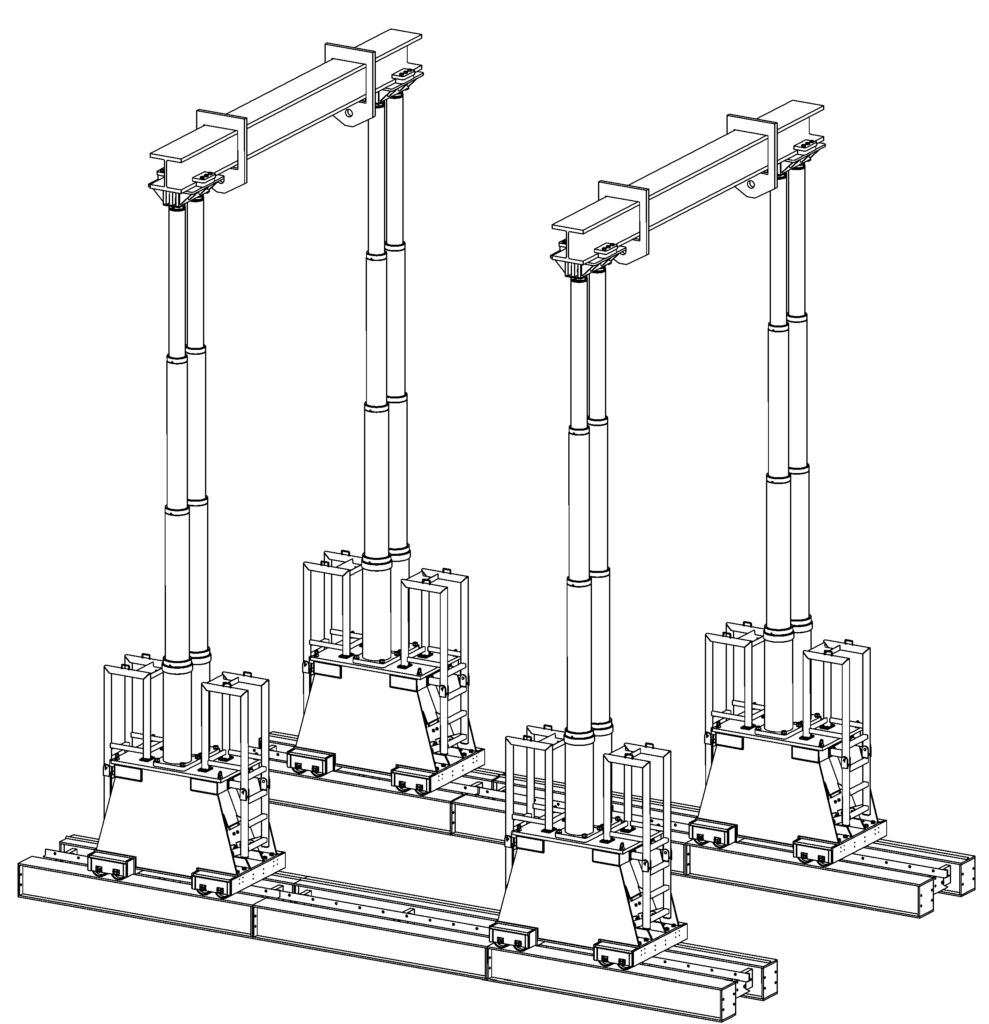
Lee Contracting In-House Cranes
Lee Contracting’s in-house equipment includes cranes with capacities up to 300 tons and gantries with capacities up to 1,200 tons. We can complete your industrial project no matter the size or complexity. Not only can we complete any of your crane needs, we provide full turn-key solutions to assist with shutdown, start-up, hookups, maintenance and more.
Receive your free quote today or call us today at (888) 833-8776 to learn how we can complete your next industrial project.
Subscribe and receive updates via email
Cranes are a widely used piece of equipment worldwide in many different capacities. Types of cranes vary depending on types of work in different situations. Crawler cranes, overhead cranes, hydraulic cranes and gantry cranes can be utilized to complete a variety of projects. Next week we will discuss gantry cranes and how our experienced rigging team completes heavy industrial projects using specialized processes and equipment. Let’s discuss the components of a mobile hydraulic crane as it is the most recognizable crane used in a variety of industries.
Crane Definitions
- Carrier – The portion of the crane located below the turntable bearing.
- Operators Cab – A housing that covers the operator’s station.
- Outrigger – An extendable supporting device used to level the crane and increase stability.
- Outrigger Float or Outrigger Jack – The hydraulic cylinder on the outrigger beam which extends vertically to raise and lower the crane for leveling.
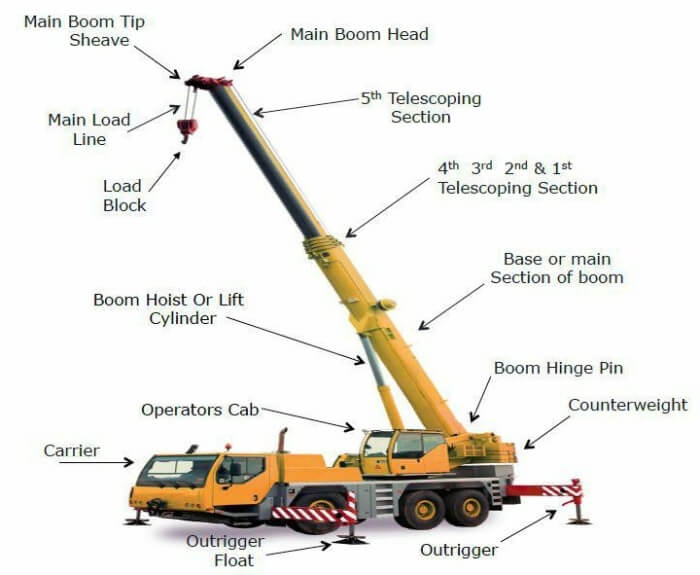
- Counterweight – Weight used to supplement the weight of the crane in providing stability for lifting loads.
- Boom – Telescopic or fixed arm that is used to move objects.
- Boom Hoist – Rope drum and its drive, or another mechanism, for controlling the angle of a lattice boom crane.
- Boom Section – Individual lattice structure which are pinned together to form the boom attachment. Crane lattice booms are usually in two basic sections, tip and base. Such booms may be lengthened by insertion of one or more additional extension sections.
- Load – The total superimposed weight on the hoist load block or hook.
- Load Block – The assembly of hook or shackle, swivel, bearing, sheaves, sprockets, pins and frame suspended by the hoisting rope or load chain.
- Hoist – A mechanical unit that is used for lifting and lowering a load via a hook or lifting attachment.
- Hoist Chain – The load-bearing chain in a hoist.
Lee Contracting In-House Cranes
Lee Contracting’s in-house equipment includes cranes with capacities up to 300 tons and gantries with capacities up to 1,200 tons. We can complete your industrial project no matter the size or complexity. Not only can we complete any of your crane needs, we provide full turn-key solutions to assist with shutdown, start-up, hookups, maintenance and more.
Receive your free quote today or call us today at (888) 833-8776 to learn how we can complete your next industrial project.
Subscribe and receive updates via email
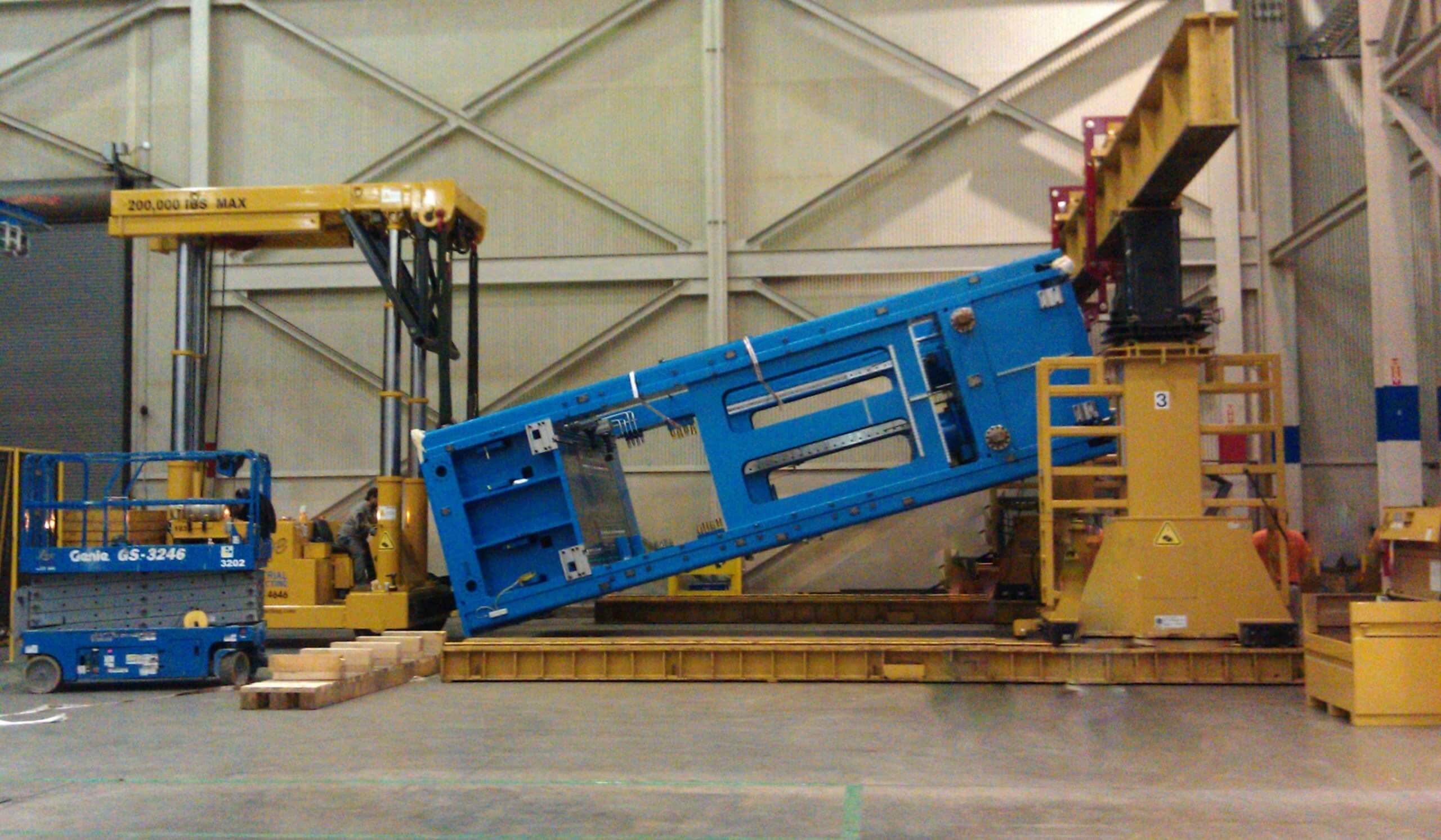
Not all machinery movers are the same. Many companies cannot provide turn-key services like Lee Contracting. Hiring professional riggers will provide high-quality results. Hiring Lee Contracting for your rigging and utility hookup needs saves you time and money.
Benefits of Hiring a Turn-Key Contractor
Hiring a turn-key contractor is guaranteed to save you time and money. Our dedicated teams work across our 13 in-house capabilities to accelerate your schedule. A major benefit of choosing Lee as your rigging contractor is our ability to utilize our electrical department. Our electrical department can complete all your utility hookups providing cohesiveness in your schedule.
Our Riggers
Lee Contracting’s rigging department is made of up the best riggers in the industry. We work to ensure that every project is safe and efficient. We are available 24/7, 365 days a year and complete every project with state-of-the-art equipment. Our riggers installation knowledge includes stamping presses, IMMs, BMMs, weld cells, robotic cells, assembly lines and machining equipment.
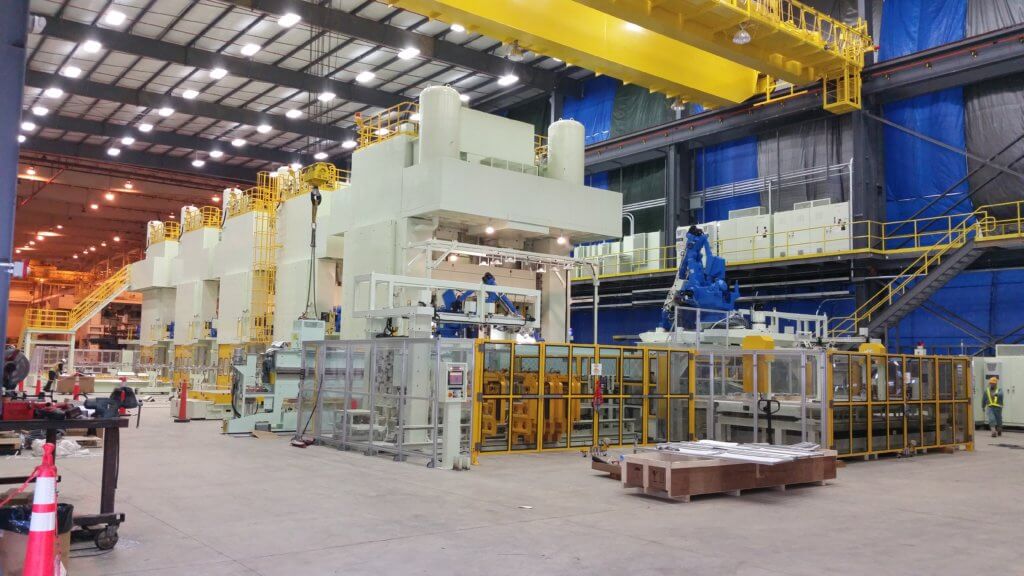
Our Electricians
Our electrical staff is complete with master electricians who can provide services ranging from routine plant maintenance all the way up to major electrical renovations. Our industry-leading modern equipment keeps our employees on the job instead of in the repair shop. Our key advantage is keeping a large electrical supply in-house for a quicker job turnaround and emergency service response.
Specialized Rigging Equipment
Rigging involves working with highly specialized rigging equipment which is meant to handle loads weighing thousands of pounds. At Lee Contracting, our in-house equipment can handle any size rigging project.
We pride ourselves on removing the barriers that come with hiring multiple contractors. With all our trades under one roof, we control every aspect of your next project, saving you time and money.
Call us today (888-833-8776) or receive a free quote online for your next rigging project.
Subscribe and receive updates via email
Relocation is a natural aspect of a growing and successful business. However, when it comes to heavy equipment relocation, the challenges can become complex. When tasked with moving massive pieces of machinery, many of which entail complex electrical connections and complicated assembly, the process becomes difficult. Securing safe and efficient heavy equipment moving with a qualified and experienced machine rigger is a vital part of determining which contractor to hire. At Lee Contracting, we are leaders in providing turnkey solutions for heavy equipment moving. We are skilled at infrastructure upgrades, loading and unloading, transportation, and many other services essential to a successful relocation of your facility.
Varied Skillset
There are many components to a heavy equipment move. Of course, you want to rest assured that a company has knowledge of transporting large pieces of equipment, but the movers you choose should also bring a lot more to the table. For example, certain types of equipment will need to be dissembled and reassembled upon arrival at the new location. This requires a degree of mechanical knowledge and skill that not all moving companies possess. Electrical knowledge is also important, particularly when it comes to reconnecting equipment.
State-of-the-Art Equipment
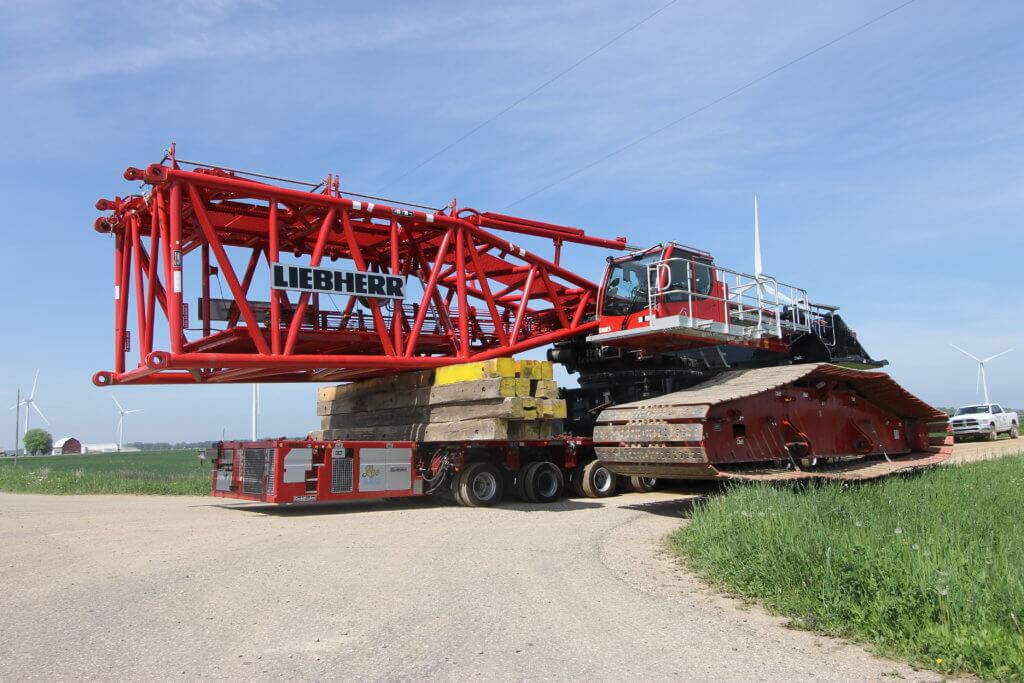
A moving company must also be equipped with reliable and effective equipment. Because you’re bound to encounter a wide assortment items that need to be moved, having a variety of lifts with varying capacities is essential. The same can be said of transportation. Fleets should be able to perform a wide range of purposes, including pickups, semi-trucks, trailers, utility vehicles, and service trucks. Other vital equipment includes gantry cranes, generators, cleaning systems, and mobile offices to establish a base of operation.
Adherence to Deadlines
No two heavy equipment moves are the same. Anticipating potential problems before they occur allows us to devise workable solutions in real-time. This is a crucial aspect when it comes to timeliness and adherence to deadlines. Failing to get a facility up and running when scheduled or delaying the delivery of an important piece of equipment due to unforeseen issues, can cause costly unwanted downtime.
Safety
Among many of the other considerations, you want to be assured that your project is being completed with a team dedicated to safety. Our safety professionals work in close conjunction with field personnel. Safety programs should be ever-evolving and be communicated not only to staff but also customers. This keeps industrial moves safe, which benefits all.
Safe, Reliable, Efficient Heavy Equipment Moving
Lee Industrial Contracting demonstrates all the above traits when undertaking industrial moves. That’s why we’ve earned the respect of peers and customers alike, which is evident when looking at our impressive listing of past projects. Additional services include industrial controls capabilities, robotics, press automation, roof-raising, and 24/7 emergency assistance in the event of a power outage.
If you’d like to get started on a quote for an upcoming equipment move, be sure to fill out our online form. You can also call (888) 833-8776 to speak with a representative today.
Subscribe and receive updates via email
For thousands of years, people have innovated ways to lift heavy objects and place them where they’re needed. As demonstrated at Stonehenge, the Pyramids of Giza, and countless ancient sites around the world, the history of the crane is closely aligned with the history of the limits of man’s strength. Ancient Greeks were miles ahead of the rest of the world when using lifting equipment. As early as 515 BC, distinctive cuttings for lifting tongs and lewis irons were discovered on stone blocks of Greek temples. These were the first blueprints for our modern cranes.
The History of The Crane
The concept of cranes originated from pulley systems that were first utilized by ancient Mesopotamians as early as 1500 BC. The first compound pulleys were created by Archimedes of Syracuse around 287 – 212 BC, which he used to lift an entire warship, along with its crew. A compound pulley has many advantages and pitfalls. A compound pulley system with five pulleys has a 5:1 advantage, meaning a man exerting a force of 50lbs, can pull 250lbs. The pitfalls include being stationary, immobile and have slow lifting speeds. These pitfalls led to the development of the winches and capstans used by the Romans to build temples. The power of circular rotation caught on quickly, which naturally led to the increased use of gear works and the development of cranes.
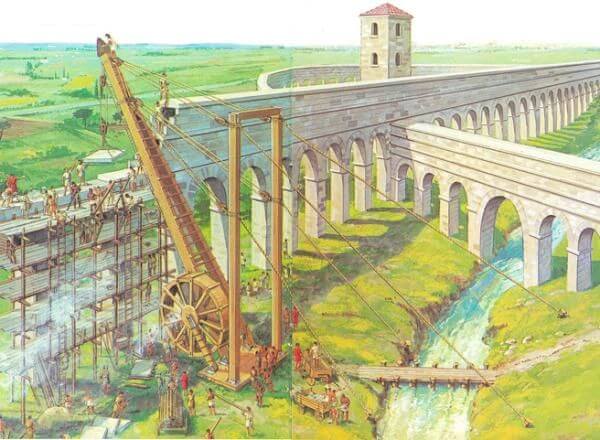
The earliest treadwheel appears in 1225. In the seas, the earliest harbor cranes were in use in 1244 in Utrecht while in England the treadwheel was recorded in 1331. At this time, cranes were used in harbors, mines and in building sites where the treadwheel crane had a major lifting role. The cranes were powered by windlasses that had radiating spokes and cranks. A single man operating a treadwheel crane has a mechanical advantage of 30:1. Treadwheel cranes were in use until the end of the 17th century and were essential at harbors and in cathedral construction.
The History of The Hydraulic Crane
While cranes remained hand-powered for centuries, hydraulic technology was developing. With a history that stretches back to Ancient Egypt, China, and Greece, water-powered machines (mostly water wheels) had been in use for thousands of years. Ancient irrigation systems, like the aqueducts developed by the Romans, relied on simple hydraulic technology, like siphoning.
But it was not until the 15th century that Blaise Pascal studied fluid hydrodynamics and hydrostatics, creating a new understanding of hydraulic principles like fluid density, pressure and incompressibility. He invented the hydraulic press which is the building block of modern hydraulics.
Much later in the 19th century, the rise of ironworks and industrialization meant that cranes were finally made with iron. The first cast iron crane was constructed in 1834. And in 1851, hand-powered cranes finally began running on steam power — the first step toward a truly hydraulic crane.
Modern Hydraulic Cranes
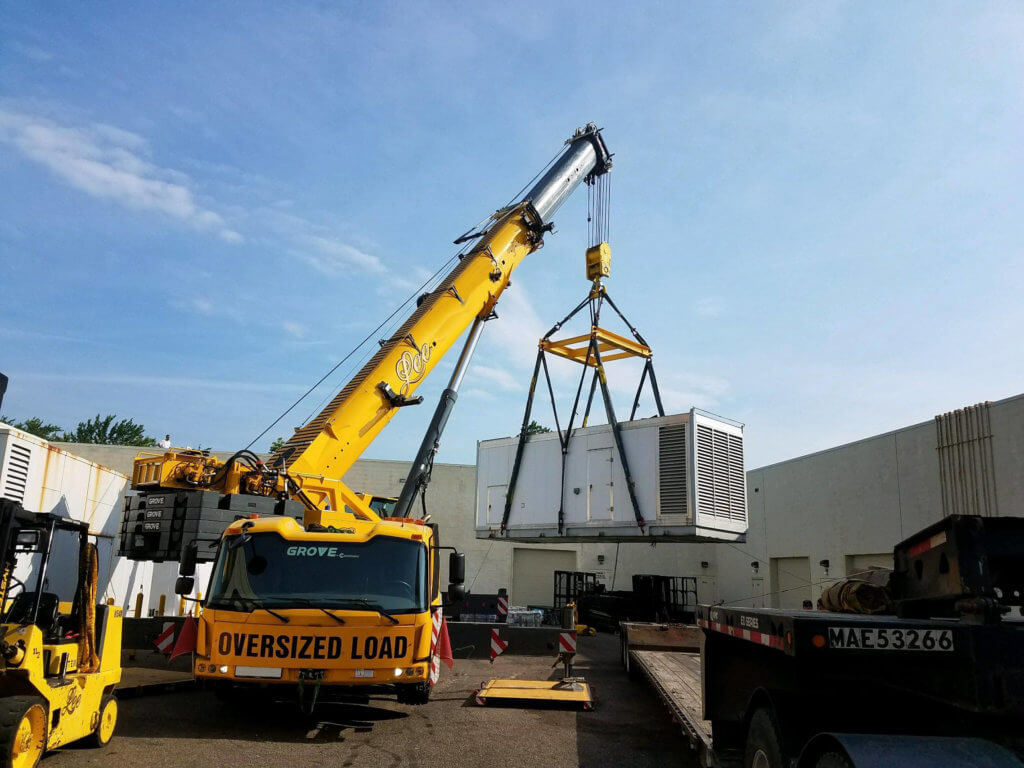
Today, hydraulic cranes are built with better specifications and materials than cranes in the 1800s but rely on the same mechanical and hydraulic principles developed centuries ago.
Modern hydraulic cranes are filled with an incompressible fluid, usually oil, that perfectly transfers pressure between pistons. Variations on this simple leveraging of fluid movement have allowed us to engineer large capacity cranes.
The Future of Cranes
In modern day, some mobile hydraulic cranes have a load capacity of up to 1,200 tons with a boom extending to 328 feet. While stationary cranes can have a much larger capacity, a mobile crane is beneficial for temporary construction. But what does the future of cranes look like? Certain companies are now developing remote monitoring and support. For remote monitoring, sensors are placed on the crane to collect data including running time, motor starts, work cycle and emergency stops. Remote support includes specialists ready to provide problem-solving and troubleshooting to reduce unexpected downtime.
Lee Contracting’s in-house equipment includes cranes with capacities up to 300 tons and gantries with capacities up to 1,200 tons.
Receive your free quote today or call us today at (888) 833-8776 to learn how we can complete your next industrial project.
Photo credit:
Coarelli, F. (2014, May). Rome and Environs. University of California Press. Retrieved July 12, 2019, from https://www.ucpress.edu/book/9780520282094/rome-and-environs
Subscribe and receive updates via email
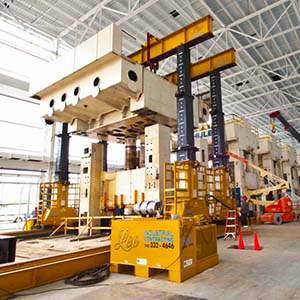
Relocation is a natural aspect of a growing and successful business. However, when it comes to heavy equipment relocation, the challenges often seem insurmountable. From a logistical perspective, the rigging process can be quite complex. When tasked with moving massive pieces of machinery, many of which entail complex electrical connections and complicated assembly, the process becomes even more difficult. Securing safe and efficient heavy machinery moving with a qualified and experienced machine rigger is vital in this case, and in Pontiac, MI, Lee Industrial Contracting stands out as a leader in providing turnkey solutions for heavy equipment moving.
These accomplished machine riggers offer an impressive resume of past projects and endeavors. They’re skilled at infrastructure upgrades, loading and unloading, transportation, and many other services essential to a competent relocation of your facility. They also use their expansive knowledge to help you find reliable industrial moving service that possesses the following qualities.
Varied Skillset
There are a lot of components to a heavy equipment move. Of course, you want to rest assured that a company has knowledge of transporting large pieces of equipment, but the movers you choose should also bring a lot more to the table. For example, certain types of equipment will need to be dissembled and reassembled upon arrival at the new location. This requires a degree of mechanical knowledge and skill that not all moving companies possess. Electrical knowledge is also important, particularly when it comes to reconnecting equipment. A facility faces costly downtime if their turnkey solutions company hits a snag due to lack of knowledge.
State-of-the-Art Equipment
In the same token, a moving company must also be equipped with reliable equipment. Because you’re bound to encounter a wide assortment items that need to be moved, having a variety of lifts with varying capacities is essential. The same can be said of transportation. Fleets should be able to perform a wide range of purposes, including pickups, semi-trucks, trailers, utility vehicles, and service trucks. Other vital equipment includes gantry cranes, generators, cleaning systems, and mobile offices to establish a base of operation.
Adherence to Deadlines
No two heavy equipment moves are the same. Accordingly, a heavy equipment moving company must be able to anticipate potential problems and devise workable solutions in real time. This is a crucial aspect when it comes to timeliness and adherence to deadlines. Failing to get a facility up and running when scheduled or delaying the delivery of an important piece of equipment due to unforeseen issues, will throw operations into a tailspin. This can impact a company’s bottom line, but it can also deal a blow to its reputation, cause customers to lose confidence, and generally create a lot of unneeded stress.
Emphasis on Safety
Among many of the other considerations, you want to rest assured that the industrial rigging process is undertaken with an insistence on safety. Having a skilled safety team in place is key in this regard, and it’s also important that safety professionals work in close conjunction with field personnel. Safety programs should be ever-evolving and tenets should be communicated not only to staff but also customers. This keeps industrial moves safe, which benefits all. When a mover takes the proper steps to reduce employee injury, they can also keep their costs low.
Safe, Reliable, Efficient Heavy Equipment Moving
Lee Industrial Contracting demonstrates all of the above traits when undertaking massive industrial moves. That’s why they’ve earned the respect of peers and customers alike, which is evident when looking at their impressive listing of past projects. Additional services include industrial controls capabilities, office expansions, robotics, press automation, roof-raising, and 24/7 emergency assistance in the event of a power outage. If you’d like to get started on a quote for an upcoming relocation, be sure to fill out our online form. You can also call (888) 833-8776 to speak with a representative today.
Subscribe and receive updates via email
Let Us Do the Heavy Lifting: Professional Rigging Done Right
Mechanical and industrial rigging are key elements to any plant project or relocation. Hiring professional riggers in Michigan is absolutely critical for the successful completion of the job. Experience means deadlines are met and everyone is safe. At Lee Industrial Contracting every job we do is done with accuracy and safety as our top priority.
How We Keep You and Your Team Safe
Every job site we work on is our job site too. Our industrial machinery movers have a safety culture in place that ensures we follow protocols and guidelines on every rigging job to avoid accident and injury to our employees and yours. We have our own Safety Manager whose sole purpose is to develop and maintain world class safety programs for all of our rigging teams and supervisors.
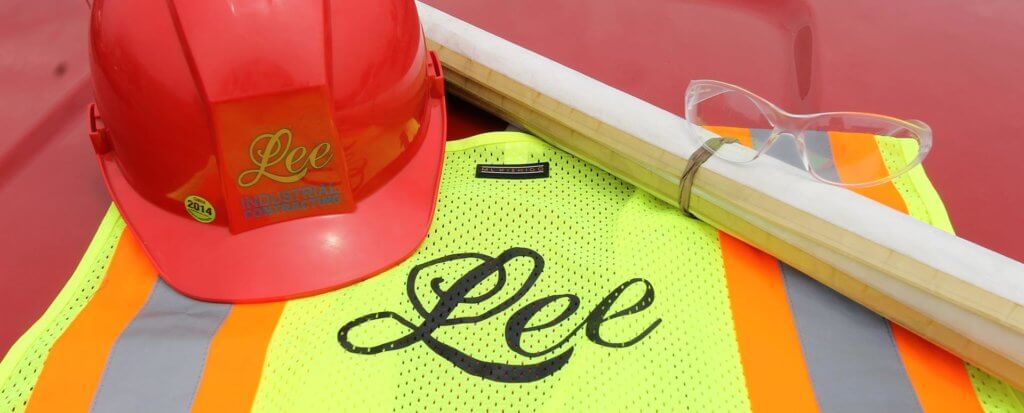
Our industrial rigging teams are highly trained on safe practices and hazard avoidance. We watch our rigging teams and with the help of our safety manager we eliminate any potentially unsafe behaviors and conditions. We work tirelessly to keep job sites clean and organized, further promoting our goal of safe rigging.
How We Minimize Downtime
We understand that rigging needs are not limited to work hours, and they don’t avoid weekends and holidays. Our rigging department operates 24/7 and 365 days a year to offer you state of the art services whenever and wherever you need us. We pride ourselves on offering turn-key services that are both prompt and efficient. Our machinery movers understand that downtime means less profit and we work to keep your downtime to a minimum.
How We Move Your Machinery
Regardless of what you need to move, we have a solution. With over 25 years of experience our rigging team has seen it all. We look over machinery plans and equipment drawings to formulate a strategy that will move your equipment as quickly as possible. Our wide range of machinery means we only need to break down your equipment minimally to successfully move it.
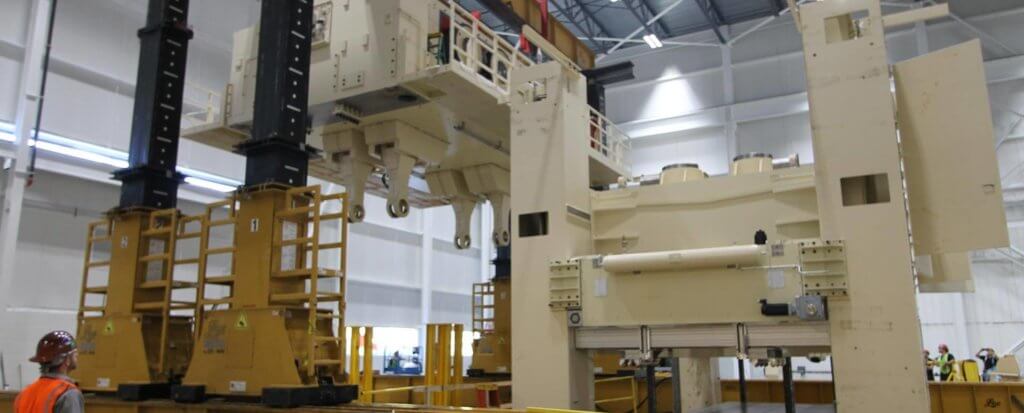
Our Goldhofer is a hydrostatically powered modular transporter that assists with heavy lifting and transporting. It can easily handle load sup to 500 tons. This adaptable piece of equipment helps us provide comprehensive rigging services at the most economical prices.
How We Save You Money
When you hire the professional Michigan riggers from Lee Contracting you are hiring an experienced team that can meet with you in person to walk your job site and develop a plan that will be both effective and timely. By viewing the project first hand, we are able to avoid otherwise costly mistakes and obstacles that could be missed.
Because our industrial rigging team is located in Michigan, you will not have to pay exorbitant travel and equipment costs. We are also always close by, which means we can act quickly and get your job done so you can get back to work.
We also own our own equipment that is maintained in-house by our own technician team, which means we can pass that savings on to our customers.
Don’t worry if you aren’t located in Michigan, our industrial machinery movers will travel anywhere in the US, as well as all around the world. They still offer cost-effective services by industry professionals.
How We Protect Your Equipment
We understand that our rigging teams will be working with some of your company’s most expensive assets. That is why we take such great care to plan out every aspect of the job before any piece of equipment leaves the ground. Our fleet of equipment is extensive and capable of handling all jobs, big or small. We are also backed by a comprehensive insurance policy. It’s extremely rare, but if something should happen, you know you’re covered when you work with Lee Contracting.
We look forward to helping you with all your industrial rigging needs. Call us today at (888) 833-8776 or fill out our online form to learn how we can help get your job done.
Subscribe and receive updates via email
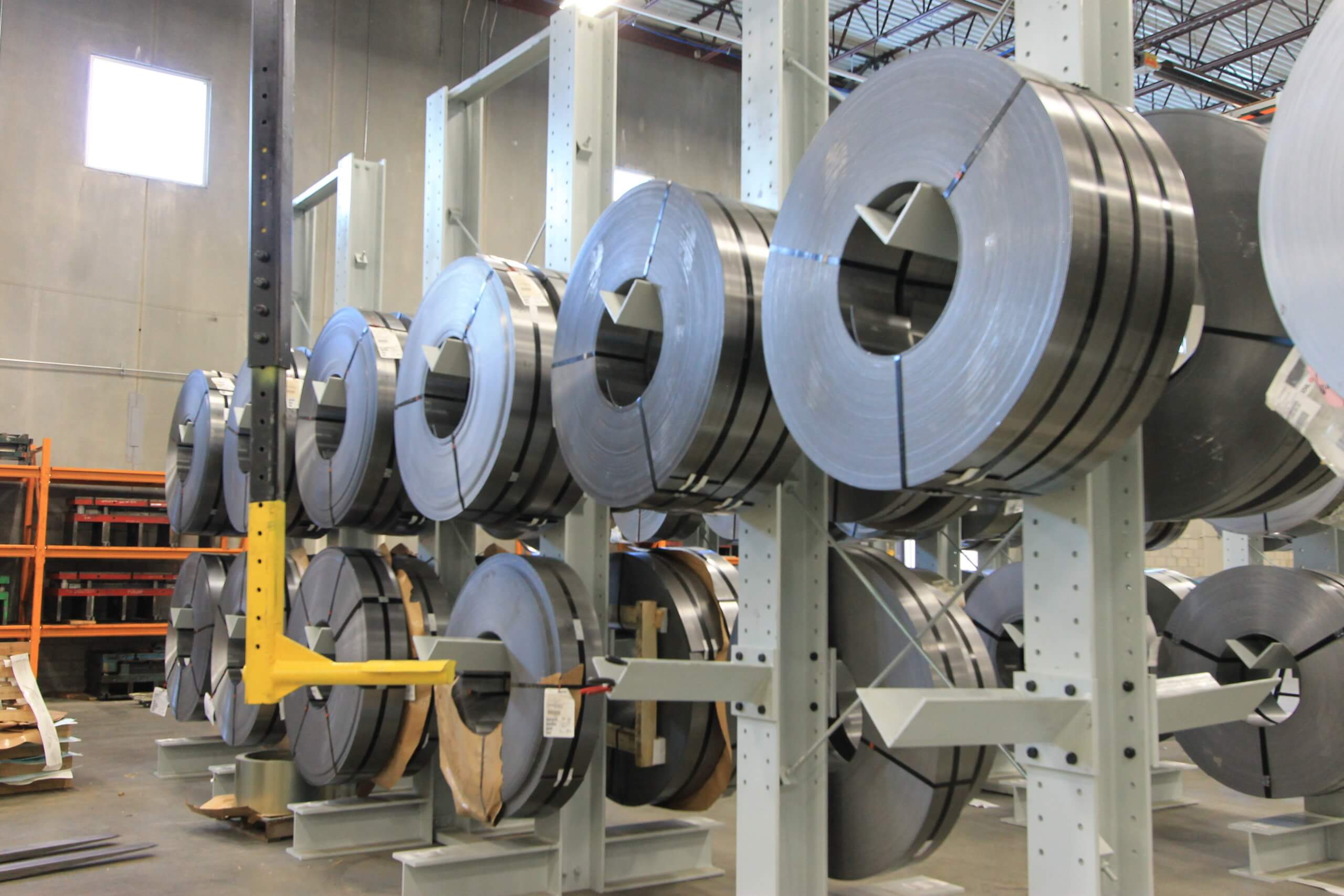
Not all machinery movers are the same. Many companies cannot provide turn-key services like Lee Contracting. Hiring professional riggers will provide high-quality results. Hiring local riggers will help cut your costs and your downtime.
Benefits of Hiring a Local Company
Hiring a Michigan based rigging company provides many benefits to your company and your project. As a local machinery mover, we will meet with you on site to walk a job, better understand the layout, understand job site conditions and avoid obstacles ahead of time. Our safety team is always ready to review job site conditions and ensure that safety is the top priority. We comply with all OSHA and MIOSHA standards. This unified approach helps our rigging team provide the best and most efficient scope of work to complete the project.
Our turn-key solutions cut down time and cost. As a local company, our travel and equipment costs are minimized. Another benefit to hiring a local machinery mover is our 24/7, 365 availability. Our availability paired with our world-class customer service makes Lee Contracting your contractor of choice.
In-House Experience
- Stamping Presses
- IMM and BMM
- Weld Cells
- Robotic Cells
- Assembly Lines
- Machining Equipment
- Structural Steel
- Layout and aligning
- Equipment rebuilds
- HVAC Systems
- Overhead Crane Installation
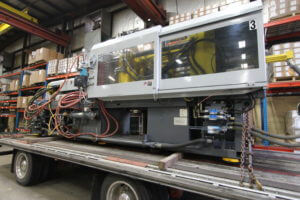 Lee Contracting’s rigging department is made of the best riggers in the industry. With almost 30 years of experience, we like to be tested beyond our limits. We work to ensure that every project is safe and efficient. We are available 24/7, 365 days a year and complete every project with state-of-the-art equipment.
Lee Contracting’s rigging department is made of the best riggers in the industry. With almost 30 years of experience, we like to be tested beyond our limits. We work to ensure that every project is safe and efficient. We are available 24/7, 365 days a year and complete every project with state-of-the-art equipment.
Call us today at (888) 833-8776 or receive a free quote online for your next rigging project.
Subscribe and receive updates via email
Industrial rigging is an important part of the moving process. It can be one of the most dangerous phases of any large-scale commercial construction project. Professional riggers are needed to safely lift and move unusual objects which can be heavy and oversized.
Using a combination of equipment, riggers frequently relocate items such as:
- Stamping Presses
- IMM and BMM
- Weld Cells
- Robotic Cells
- Assembly Lines
- Machining Equipment
- Structural Steel
- Layout and aligning
- Equipment rebuild
- HVAC Systems
The best rigging team understands the equipment being used, the full scope of the project and proper safety practices. Below are some things to consider when looking to hire a rigging contractor.
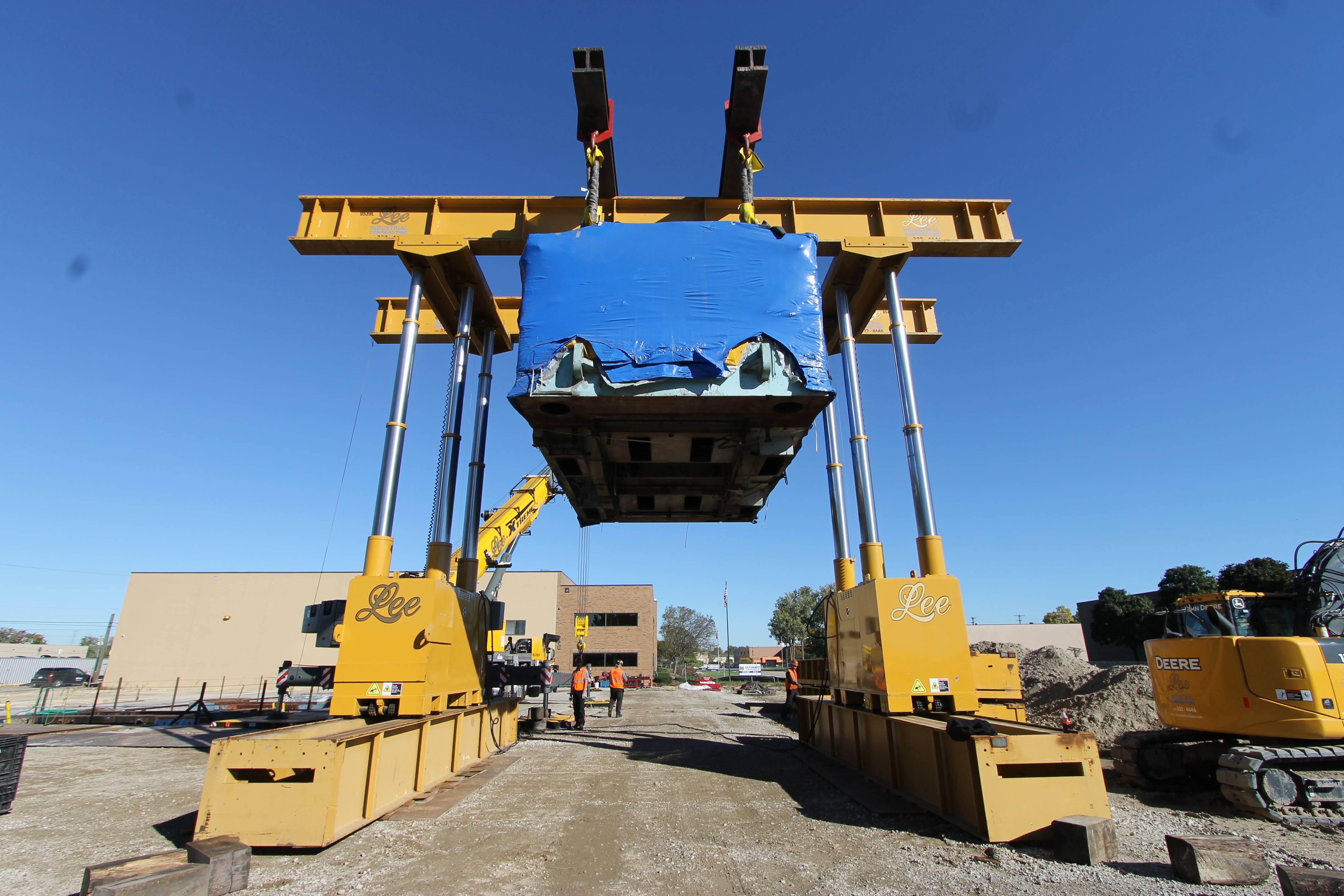
Not all rigging companies are the same
When choosing a rigging contractor, it is important to consult with an experienced rigging company. Though all rigging companies may claim they can handle your equipment, each company will have different machinery, load capacities, manpower and reputation. Lee Contracting operates 24/7, 365 days a year with state-of-the-art equipment which ensures we are ready to tackle any project.
Do they have the experience to do the job?
Riggers use complex moving techniques and important safeguards to relocate items. Your contractor should have surveyors, estimators, supervisors, engineers and operators to handle the full scope of your needs. Lee Contracting has almost 30 years of experience handling our customers important manufacturing equipment.
Are they committed to performing the work safely?
When moving items that weigh thousands of pounds, the riggers must be very familiar with the safety requirements needed to keep people and surrounding structures safe from falling objects. Lee Contracting complies with all OSHA standards and obtains all the necessary permits and insurance documentation to complete the job.
Find a rigging contractor who can do it all
There are many companies out there who provide only one service, such as rigging. Lee Contracting, however, provides a wide range of service to ensure that the installation of your new equipment goes smoothly. We offer foundations, rigging, electrical and mechanical services on every project as well as our other supporting trades: fabrication, maintenance & repair, controls & robotics, building, roof raising, emergency power and industrial storage.
Offering a wide range of trades, we can ensure that you have an efficient, cost-effective equipment installation.
Call today to receive a free RFQ on your next rigging project, 888-833-8776.


